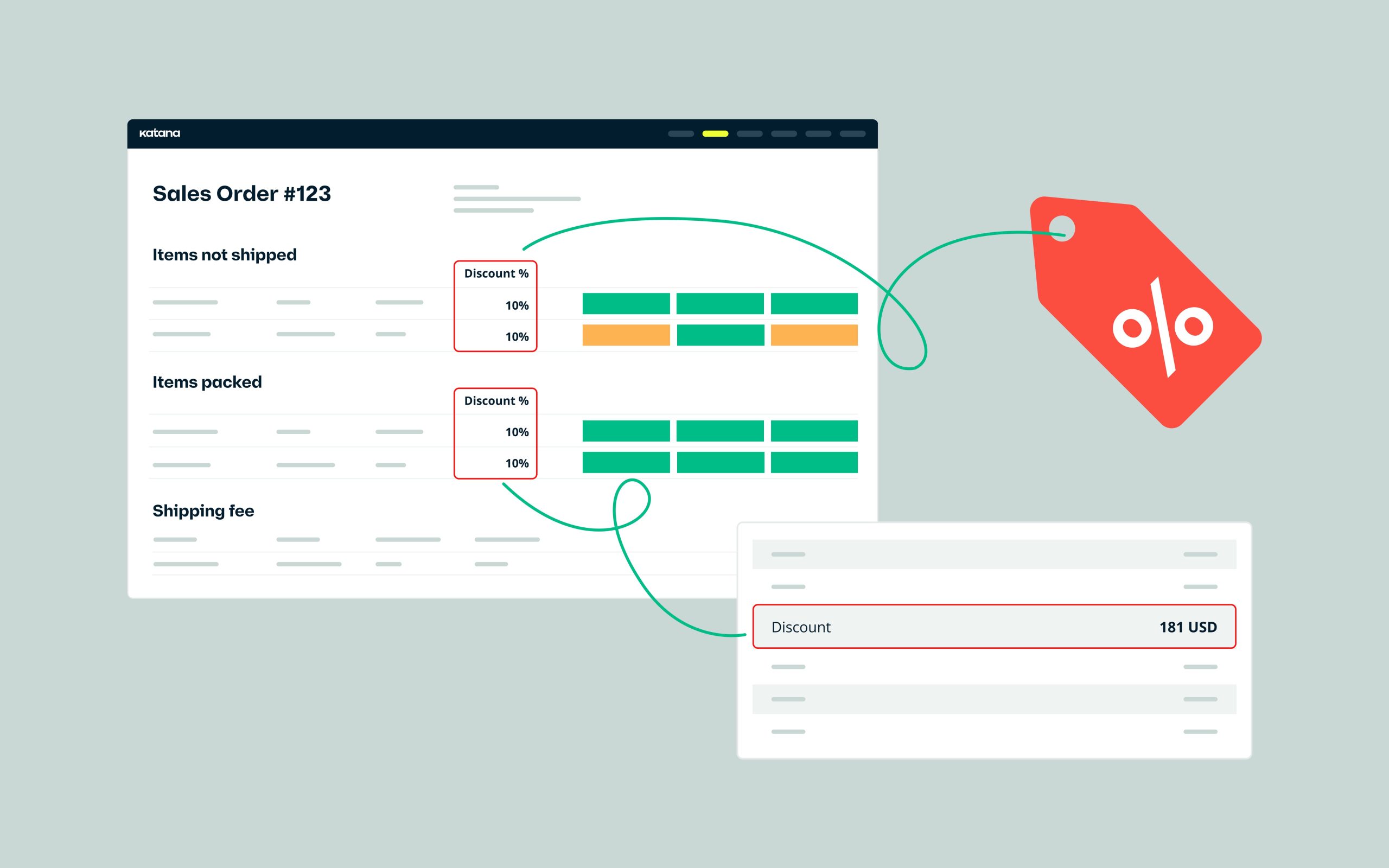Set customer-specific pricing with Price Lists
Introducing Price Lists, an easier way to set and manage customer-specific pricing, generate revenue, and keep customers happy.

Katana’s new Price List feature helps to make sales order processes more efficient and keeps customer pricing accurate. What can you do with this new feature?
- Build price lists for specific customers
- Automatically apply customer-specific pricing on sales orders
- Set pricing based on percentages or your own fixed rate
- Create and store up to 100 different price lists
- Support for lists between 1-10,000 SKUs
- Eliminate manual price editing on sales orders
What problems are we solving?
Katana’s Price Lists equip growing B2B and wholesale businesses with a tool that simplifies tedious and manual pricing processes, improving customer relations and streamlining operations to support efficiency and your revenue growth. Best of all, price lists are a set-and-forget solution, designed to minimize the frustration associated with keeping track of pricing for multiple customers.
Handling customer price lists manually, especially with tools like Excel or Sheets, can get messy. It’s easy for teams to lose files, mix them up, or accidentally share outdated or incorrect pricing with customers. Keeping prices consistent across different files can be a headache, and without a central place to track everything, mistakes are bound to happen. Katana’s price lists function as the single source of truth for businesses that require accurate and up-to-date customer pricing in one location.
Best of all, say goodbye to awkwardly named files like: CustomerName-Pricing-2024-FINAL-v9.xlsx.
Why are price lists important?
Whether you’re running a growing Shopify store, operating a wholesale distribution business, or managing a combination of sales channels, price lists provide you with flexibility. You can set, customize, and standardize pricing for different customers, SKUs, categories of items, and sales orders. They also solve a significant challenge for businesses: mistakes.
Manual data entry and recalculating and updating pricing for each item on a sales order is error-prone and takes employees away from revenue-generating activities. This process becomes even more daunting for businesses with a vast product range (thousands of SKUs) providing customized pricing to specific customers. Price Lists automate and simplify these adjustments, making the sales order process more efficient and accurate, while saving your team’s time and reducing the risk of errors. The same errors that cost your business money (and a few sighs from your accountant!).
How can I use price lists?
Here are a few use-cases of how price lists can help you:
- Incentivize wholesale customers to buy more – Manufacturers or businesses selling wholesale can create price lists to incentivize customers to purchase more with fixed per-unit pricing or percentage discount. This reduces inventory costs, generates revenue, and passes savings on to the customers.
- Tailor pricing based on product type – A manufacturer of high-end audio equipment can choose to offer and set lower prices for a particular series of speakers they want to move, before releasing newer SKUs. The same company can also offer lower prices for customers who purchase multiple products at once.
- Offer seasonal pricing – Create price lists for products with a limited shelf life, or apply discounts to items going in or out of season. An example of this could include a company mass discounting swimsuits and summer apparel to a B2B customer before the summer season starts.
You can find a detailed guide to configuring and setting up price lists in our knowledge base. Or watch a quick demo showing how to create a price list:
Who benefits from making price lists?
Price lists play a crucial role in the inventory and sales management aspects of a business, but they also directly impact the customer experience, internal staff, and even internal or third-party accountants. In short, everyone wins, but how?
Your B2B or wholesale business and employees
Price lists are an easy way to track pricing that aligns with each client’s specific needs and buying patterns. Additionally, custom price lists streamline the negotiation process, leading to quicker buying decisions and enhanced customer satisfaction, helping drive sales and strengthen business partnerships.
We’ve touched on this already, but it’s still worth mentioning: manual data entry and tracking are prone to errors that negatively impact the bottom line. Errors create a trickle-down effect that affects employee morale, notably in customer service roles when handling inaccurate pricing tickets.
B2B and wholesale customers
Everyone saves when pricing is easier to understand. Setting fixed pricing or percentage-based discounts can incentivize customers to purchase products in bulk. This not only helps them secure a better deal with a lower cost per unit, but also helps you reduce the chance of inventory overstock and deadstock.
You can also set pricing based on your relationships with customers, and reward loyalty with customized discounts that helps them not only buy more, but keep them sticky and less likely to churn and purchase products elsewhere.
Finance teams and accountants
Accountants can analyze and report on the effectiveness of pricing strategies and their impact on sales volume and profit margins, especially for wholesale businesses that require pricing across product collections and multiple customers. They can help businesses make more strategic decisions regarding their pricing and can more accurately predict future revenue and COGs (cost of goods sold) to their customers with less errors caused by manual data entry.
Can I import or export my own price lists?
Yes! Katana’s Price List supports both importing and exporting of your customized price lists, making order management or even transitioning from another inventory management system easy.
Who can use Katana’s Price List feature?
Price Lists are included with Katana’s Professional and Professional Plus plans.
Not using Katana yet? Get a demo and discover the power of real-time insights today!
Get inventory trends, news, and tips every month
Explore all categories
Get visibility over your sales and stock
Wave goodbye to uncertainty with Katana Cloud Inventory — AI-powered for total inventory control